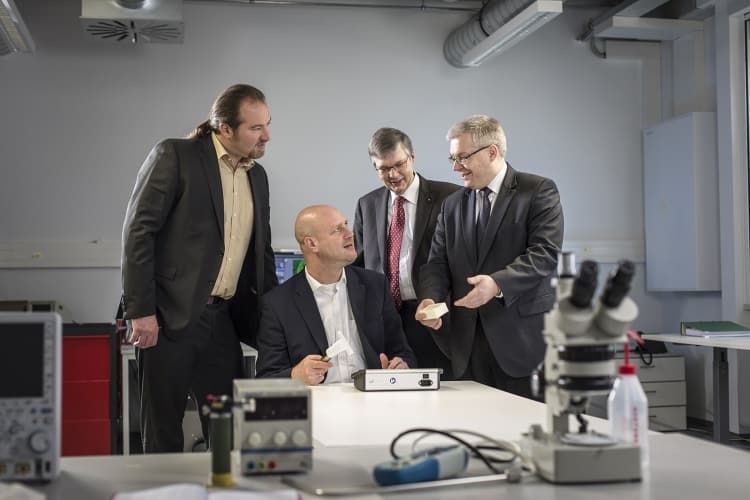Medical researchers in Germany have developed a technique which, they claim, will help open wounds to heal more quickly. A particular problem in older people, open wounds such as ulcers, complications from diabetes and skin conditions like dermatitis and psoriasis are painful, often difficult to treat, and create a path for further infections.

The treatment method uses cold plasma as a healing agent, the first time this has been used on human beings. It uses the skin itself as an electrode in an electrical discharge process. The treatment device, about the size of a hand-held torch, houses an electrode that the doctor holds close to the wound site. A high voltage applied across the gap between the device electrode and the skin ‘electrode’ creates an electrical field that ionises the air in the gap, bathing the wound in a non-thermal or cold plasma. ‘All you feel is a slight tickling sensation,’ said Prof Wolfgang Viöl of the Fraunhofer Institute for Surface Engineering and Thin Films, who developed the technique working with the company Cinogy and the Department of Dermatology, Venereology and Allergology at the University Medical Centre Göttingen.
The plasma kills bacteria on the skin surface, while the electrical fields stimulate microcirculation in the blood vessels, bringing more oxygen into the affected area ; both of these accelerate healing. Moreover, according to Prof Steffen Emmet of Göttingen, who carried out a clinical study of the technique, which is called PlasmaDerm, it combines the effect of several other therapies but works faster. “UV, ozone and electrotherapy are already available, but plasma achieves a better effect in a shorter period of time,” he said.
Working with Cinogy, the researchers developed a portable unit that powers the treatment device. “We had to develop a device that was small but capable of generating high voltages. The result is only about the size of a laptop and can be plugged into a normal socket between 100 and 230 V,” says Dr. Dirk Wandke, managing director of Cinogy.
Viöl believes that he compact size of thre unjt and the simplicity of its use could make it suitable for first aid at home. “I anticipate that in the future, a child who falls off a skateboard could be treated at home. Parents could care for the wound using a small PlasmaDerm stick instead of iodine. And I could even imagine the device itself being able to measure what’s wrong with somebody’s skin and then adjust the dose accordingly and start the physical treatment.”




Poll: Should the UK’s railways be renationalised?
I think that a network inclusive of the vehicles on it would make sense. However it remains to be seen if there is any plan for it to be for the...